Image upscaling for smartphone images
From WhiteWall expert Katharina Wergen
A quick snapshot, a successful vacation scene or a spontaneous portrait taken with a smartphone - such images often have great emotional and creative value. However, when it comes to printing these images in large format, many reach their technical limits. The resolution seems too low, details appear soft and the desire for a large-format mural becomes a distant prospect.
This is where “upscaling” comes in, i.e. the intelligent enlargement of a digital image. While traditional methods often lose quality, modern AI-based technologies such as WhiteWall’s SuperResolution enable a completely new approach. With their help, image files can be automatically enhanced without any visible blurring or artifacts.
Especially for smartphone images, which are not always suitable for large-format printing due to compact sensors and limited file sizes, upscaling using artificial intelligence offers an effective solution: small files are transformed into impressive gallery-quality prints - without any manual post-processing.
In this article, you will learn how image upscaling works, what you should pay attention to and how you can get more out of your smartphone images with the right technology - even in large format.
1. What does upscaling actually mean?
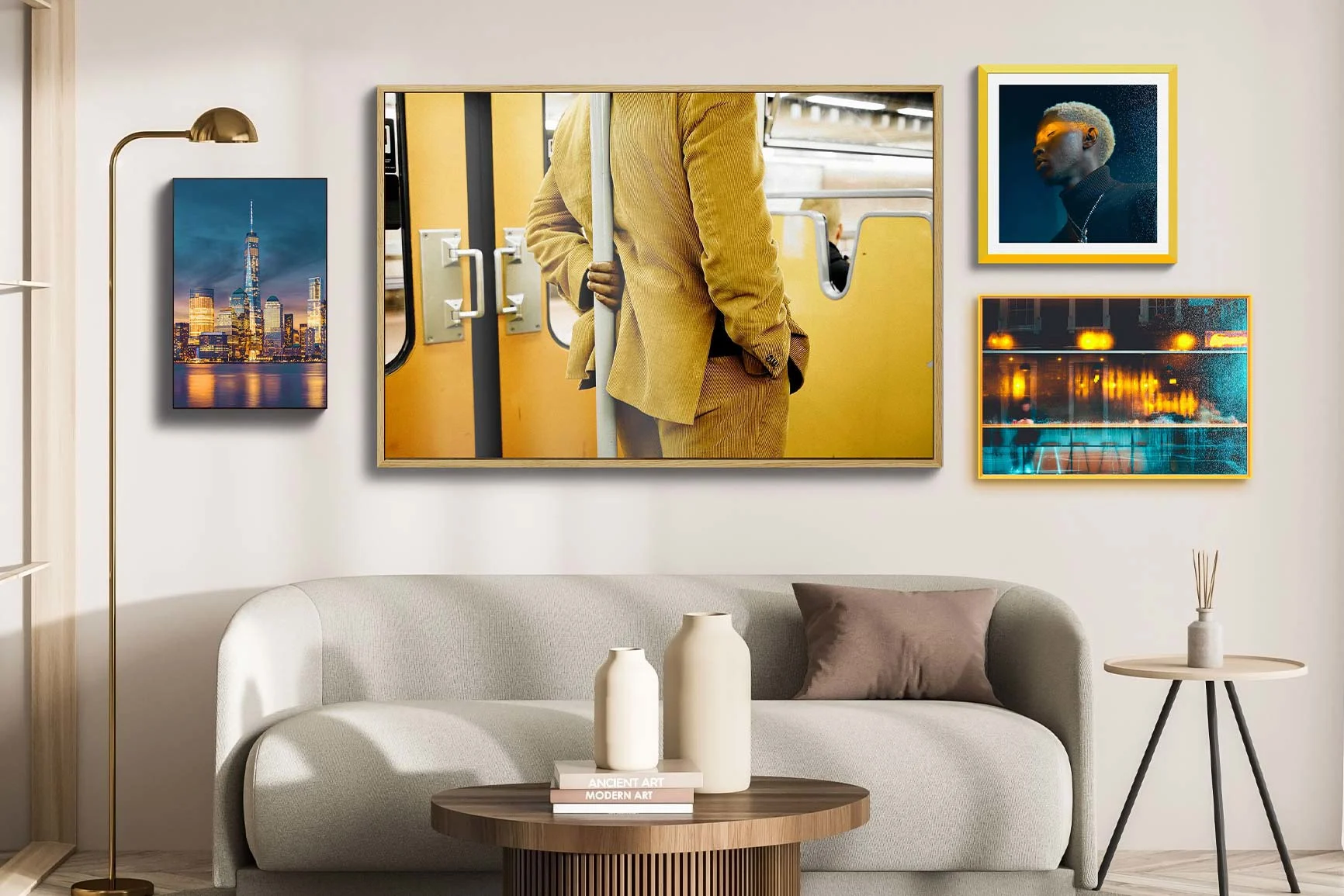
Upscaling refers to the process of enlarging a digital image beyond its original resolution - with the aim of displaying it in higher quality on larger formats, such as for printing behind acrylic glass. Upscaling is particularly important in photography when the original image is not sufficient for the desired print size.
Technical basics: interpolation and image enlargement
In conventional upscaling, additional pixels are calculated between the existing pixels - a process known as interpolation. An algorithm analyzes the colour information of adjacent pixels and fills in the gaps accordingly. Common methods include bilinear or bicubic interpolation. The result is an enlarged image that formally has the desired resolution - but often at the expense of sharpness and detail.
Traditional methods vs. modern AI algorithms
While traditional methods work purely mathematically, modern upscaling methods go far beyond this. AI-supported upscaling, as used in the WhiteWall SuperResolution, analyzes the image content based on context: A trained neural network reconstructs missing details realistically - not just multiplies them. The result is a visually more convincing enlargement that preserves natural structures, sharp edges and fine textures.
Typical areas of application
Upscaling is used in practice in the following scenarios:
Smartphone photos with limited output resolution
Enlargement of image sections
Preparation of older digital images for modern large formats
Prints with particularly high detail fidelity
Upscaling is therefore an indispensable tool for all those who want to fully exploit the potential of their images and do not want to compromise on quality even in large format.
2. Limits of classic upscaling methods

The idea of simply enlarging an image sounds simple at first. But in practice, conventional upscaling methods quickly reach their limits - especially when large-format prints are to be created from small smartphone files.
Loss of detail and image sharpness
Classic interpolation methods such as bilinear or bicubic enlargement work purely mathematically. They calculate new pixels based on the values of neighboring pixels without taking their content into account. This leads to a visible loss of detail at high magnifications: contours appear soft, fine textures blur and the image loses its expressiveness.
Artifact formation and visual disturbance
Another problem with conventional methods is the creation of artificial image artifacts. Particularly with high-contrast motifs or in areas with fine lines, unclean transitions, color fringing or blurred edges occur. Such effects are not only disruptive in print - they also significantly reduce the professional appearance of the work.
Limited printability
An enlarged image that looks acceptable on the screen can quickly disappoint in large format. This is because weaknesses become mercilessly visible in print: pixel edges, tonal value breaks and blurring, which can be digitally concealed, are clearly visible. Such results are inadequate for gallery-quality applications.
Conclusion
If you want to enhance smartphone photos or older digital images, you need more than simple enlargement algorithms. Only modern AI-based solutions such as WhiteWall SuperResolution enable upscaling in a quality that also meets high aesthetic and printing requirements.
3. AI upscaling: Intelligent enlargement with WhiteWall SuperResolution

The limits of classic enlargement methods can now be overcome with artificial intelligence. With SuperResolution technology, WhiteWall relies on a modern AI process that enhances smartphone images and other digital files in such a way that even large-format prints with excellent image quality are possible.
What is WhiteWall SuperResolution?
WhiteWall SuperResolution is an AI-supported image enlargement algorithm that has been specially developed for high-quality printing. Using a neural network, the technology analyzes millions of real image samples and recognizes how missing details can be added realistically - with pixel accuracy and without the typical weaknesses of conventional upscalers.
The result: enlarged images that are characterized by natural structures, clear contours and an impressive level of detail - even at an originally low resolution.
Ideal for smartphone images and image sections
SuperResolution is particularly valuable for:
Smartphone photos that are technically limited
Image sections where only part of the original image is to be printed
Digital archive images whose resolution no longer meets today’s standards
The AI technology not only recognizes image patterns, but also contexts - such as skin structures, sky gradients or fine textures - and reproduces them realistically.
Seamlessly integrated into the WhiteWall process
SuperResolution is available directly in the WhiteWall configurator. When a high-resolution print is requested, the system analyses the image quality and automatically suggests optimization using SuperResolution - transparently, comprehensibly and controllably. You decide for yourself whether you want to use this function.
AI and printing expertise transform a simple smartphone image into an impressive mural - in true WhiteWall gallery quality.
4. What makes a picture “upscalable”?
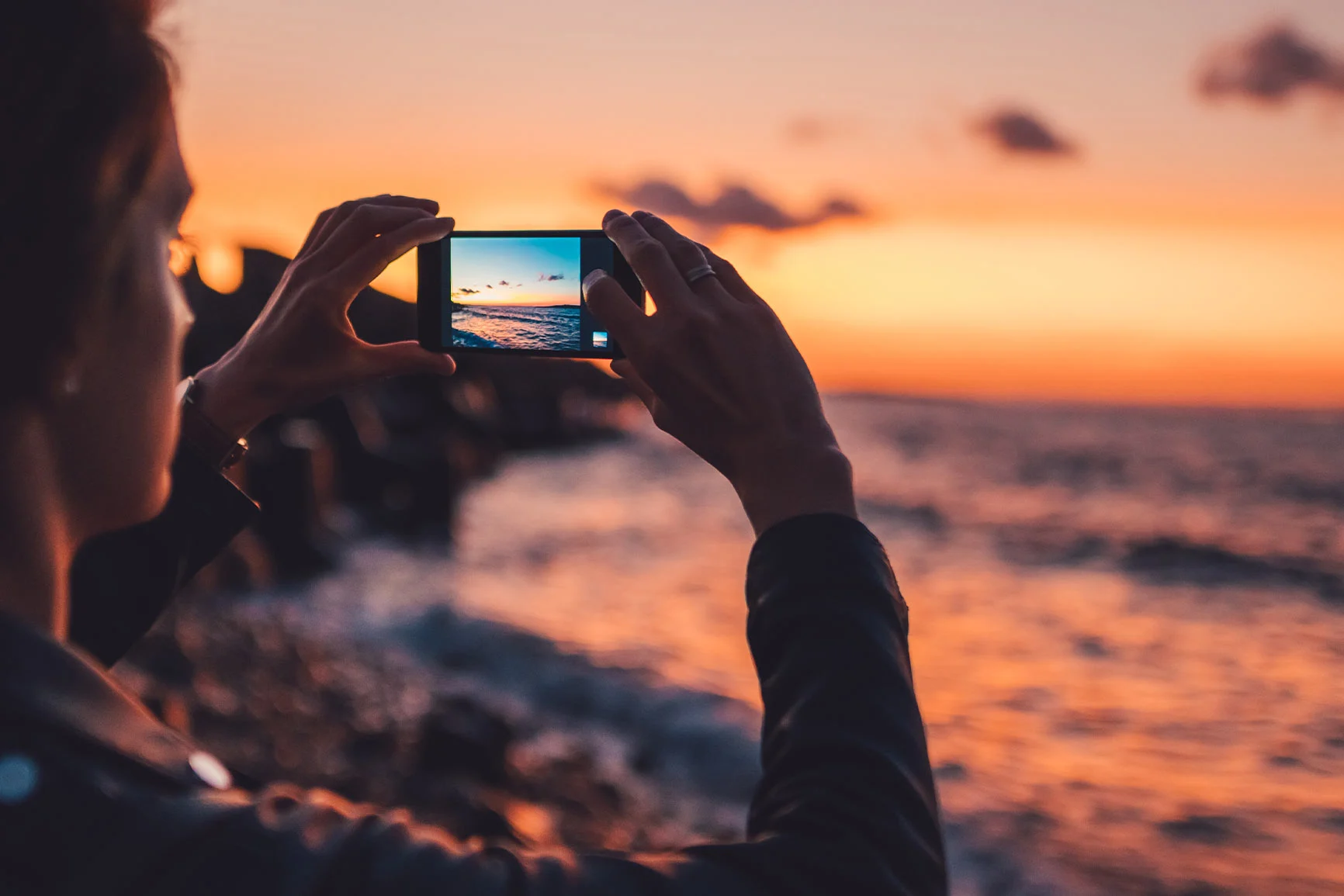
Not every image can be enlarged at will - not even with the help of artificial intelligence. For upscaling to really lead to a convincing print result, the source file should meet certain criteria. With smartphone photos in particular, it is worth observing a few basic rules.
Good output quality is crucial
A clear focus, sufficient light and low compression are the basis for a good upscaling result. Even if the resolution is not optimal, the image must be free of blurring, strong noise patterns or excessive processing. Because: AI can reconstruct details, but cannot “conjure away” creative or technical errors.
Important criteria at a glance:
Sharpness: The focus should be exact - especially for portraits or architectural shots
Exposure: Balanced brightness without overexposed or too dark image areas is ideal
Compression: Avoid images from messengers or social media that have been heavily compressed
Editing: Filters and artificial effects should be used sparingly so as not to “noise” the structure of the AI
Smartphone photography with upscaling in mind
If you are preparing your smartphone images specifically for large-format printing, you should think about upscaling when you take the photos:
Use the RAW format if your device supports it
Avoid digital zoom - rather crop and upscale later
Shoot in good lighting conditions - this reduces noise and increases the depth of detail
Hold the device steady - or use a tripod for maximum image stability
These measures create the ideal conditions for WhiteWall SuperResolution to enlarge your image in an impressive way - without compromising on quality.
5. Practical application examples
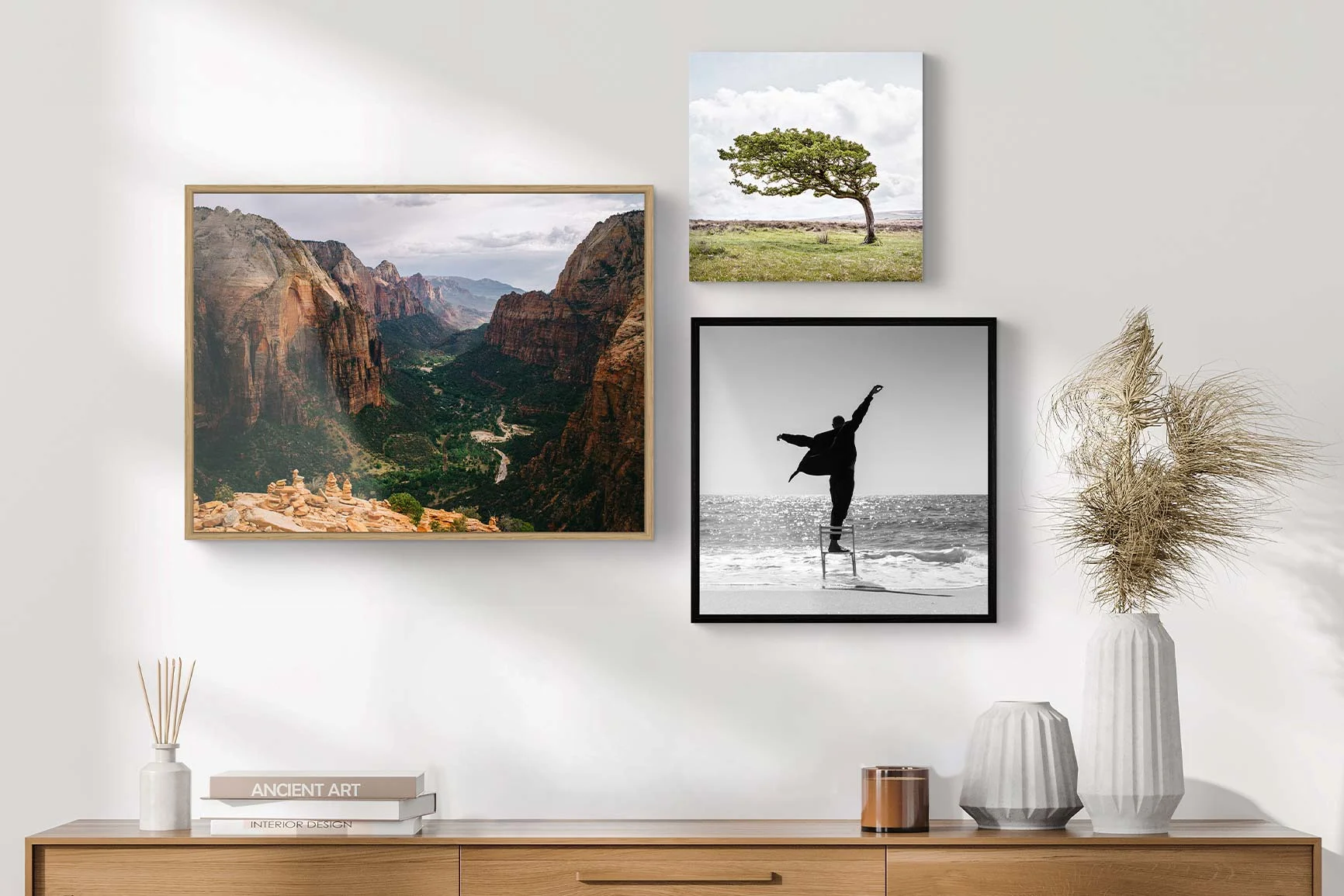
The technology behind WhiteWall SuperResolution is not only theoretically convincing - it has already proven itself in numerous customer projects. Whether hobby photography, professional design or special gifts: AI upscaling opens up new creative possibilities for large-format printing of smartphone images.
From snapshot to mural
A typical example: a user takes a photo of an atmospheric scene by the sea with their smartphone. The motif is emotionally powerful, but technically borderline - only 8 megapixels and slightly cropped. Thanks to WhiteWall SuperResolution, the image is enlarged, sharpened and printed on 80 × 60 cm behind acrylic glass. The result: a brilliant mural with depth and expression.
Portraits with expression - despite limited data
Another case: a black and white portrait, taken with an older smartphone, is to be realized as a large-format fine art print. The original resolution is only 6 megapixels. AI upscaling and subsequent UltraHD sharpening creates a silky matt print on Hahnemühle Photo Rag - with fine tonal gradations and impressive sharpness on the face.
Digital image archives revitalized
Old digital images can also be “revived” by upscaling. A customer selects a ten-year-old JPEG from the family archive for an anniversary exhibition. After processing with WhiteWall SuperResolution, the result is a razor-sharp mural on Alu-Dibond in 100 × 75 cm format - timeless, high-quality and emotional.
These practical examples show that even supposedly simple files can be transformed into high-quality works of art through the targeted use of technology. The decisive factors are the deliberate selection of images, intelligent technology - and uncompromising quality production by WhiteWall.
Product recommendations: High-quality printing meets intelligent enlargement
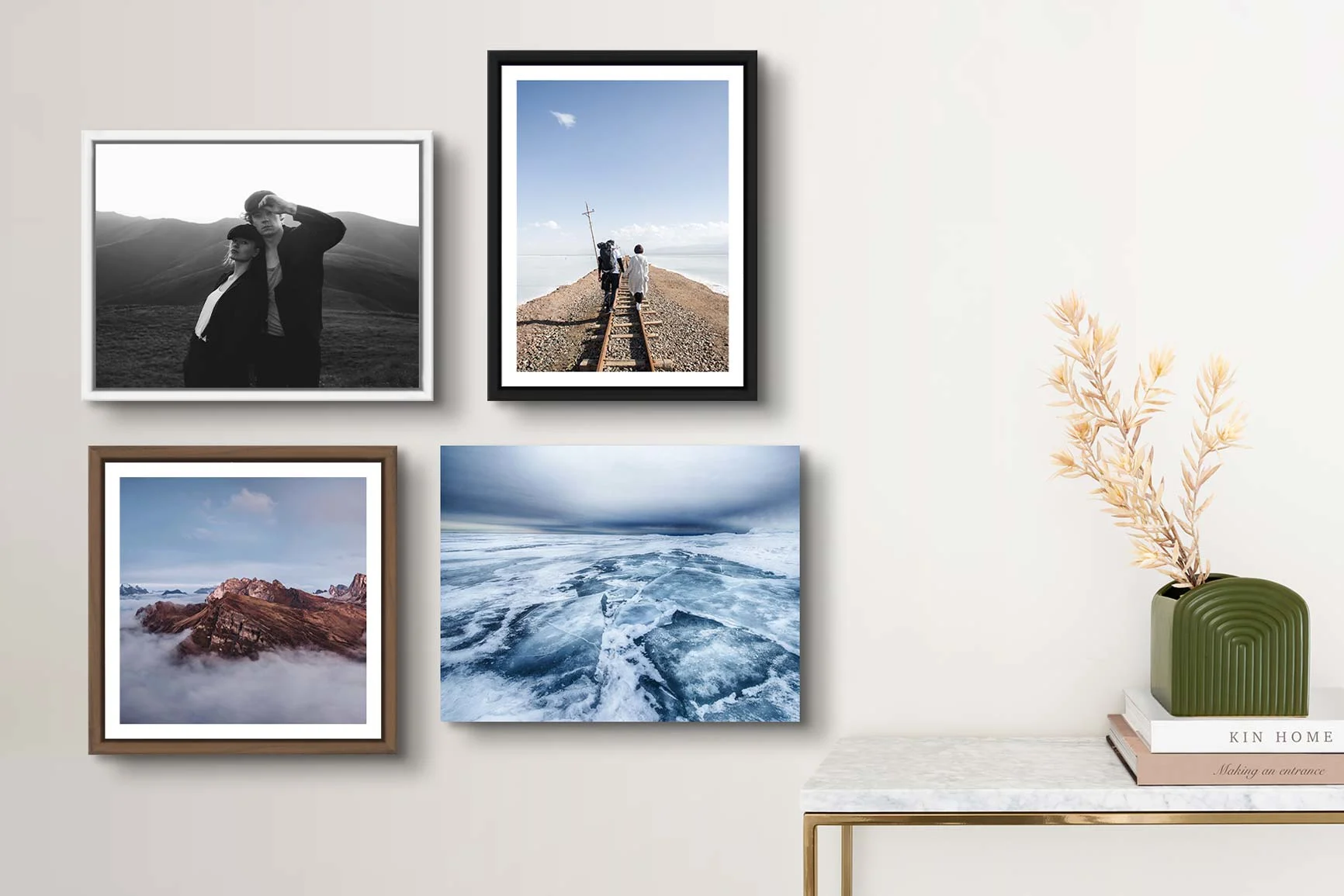
Upscaling only unfolds its full effect in combination with the right presentation medium. WhiteWall offers a wide range of high-quality products which, in combination with SuperResolution and UltraHD sharpening, create the ideal conditions for large-format prints based on smartphone images.
Photo print behind acrylic glass
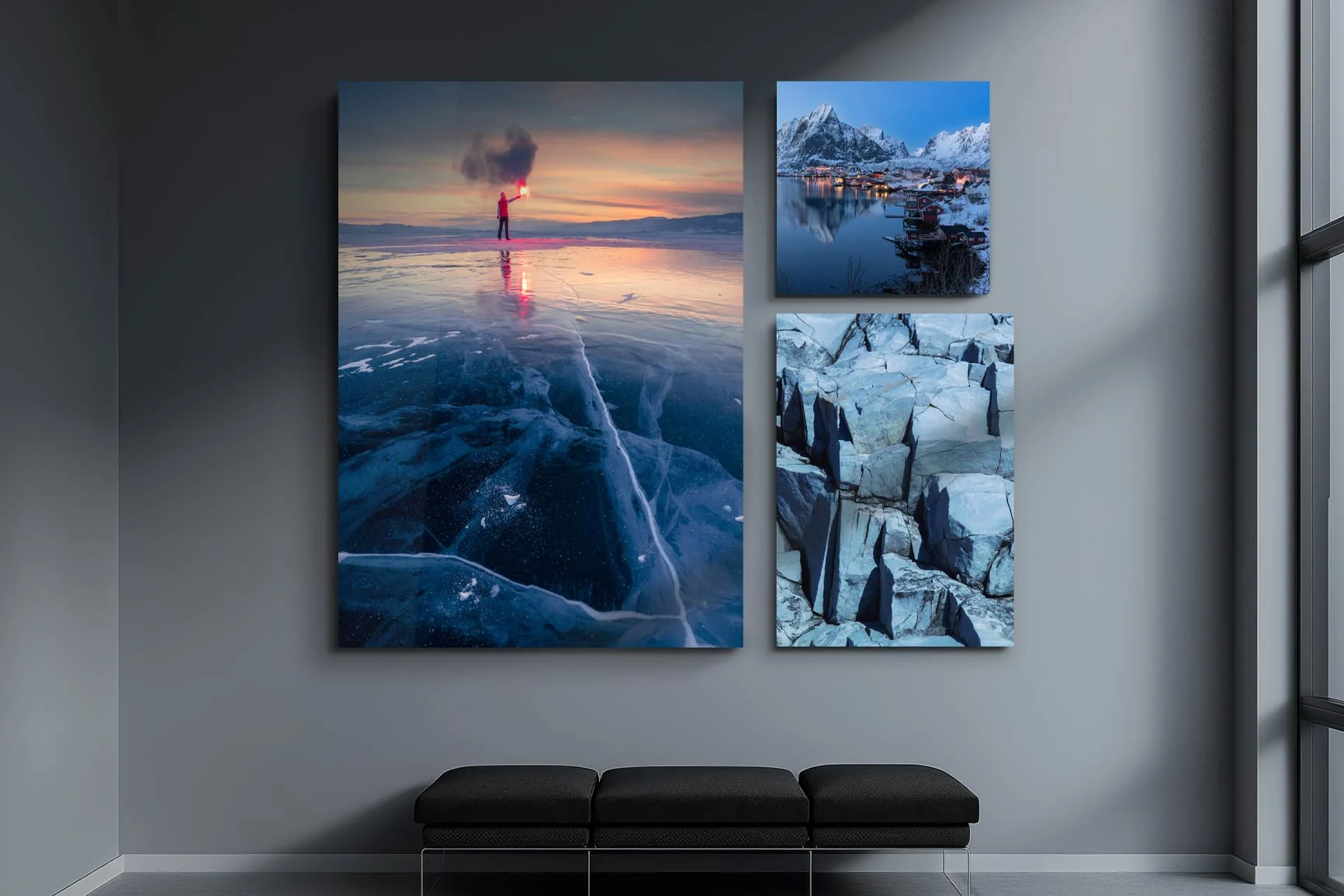
The photo print behind acrylic glass is the first choice for vivid colors and maximum sharpness. The use of SuperResolution and UltraHD sharpening brings out even the smallest details - ideal for high-contrast motifs, landscapes or architecture. The acrylic glass sealing ensures a depth effect and professional presentation.
Photo on Alu-Dibond with UltraHD sharpening
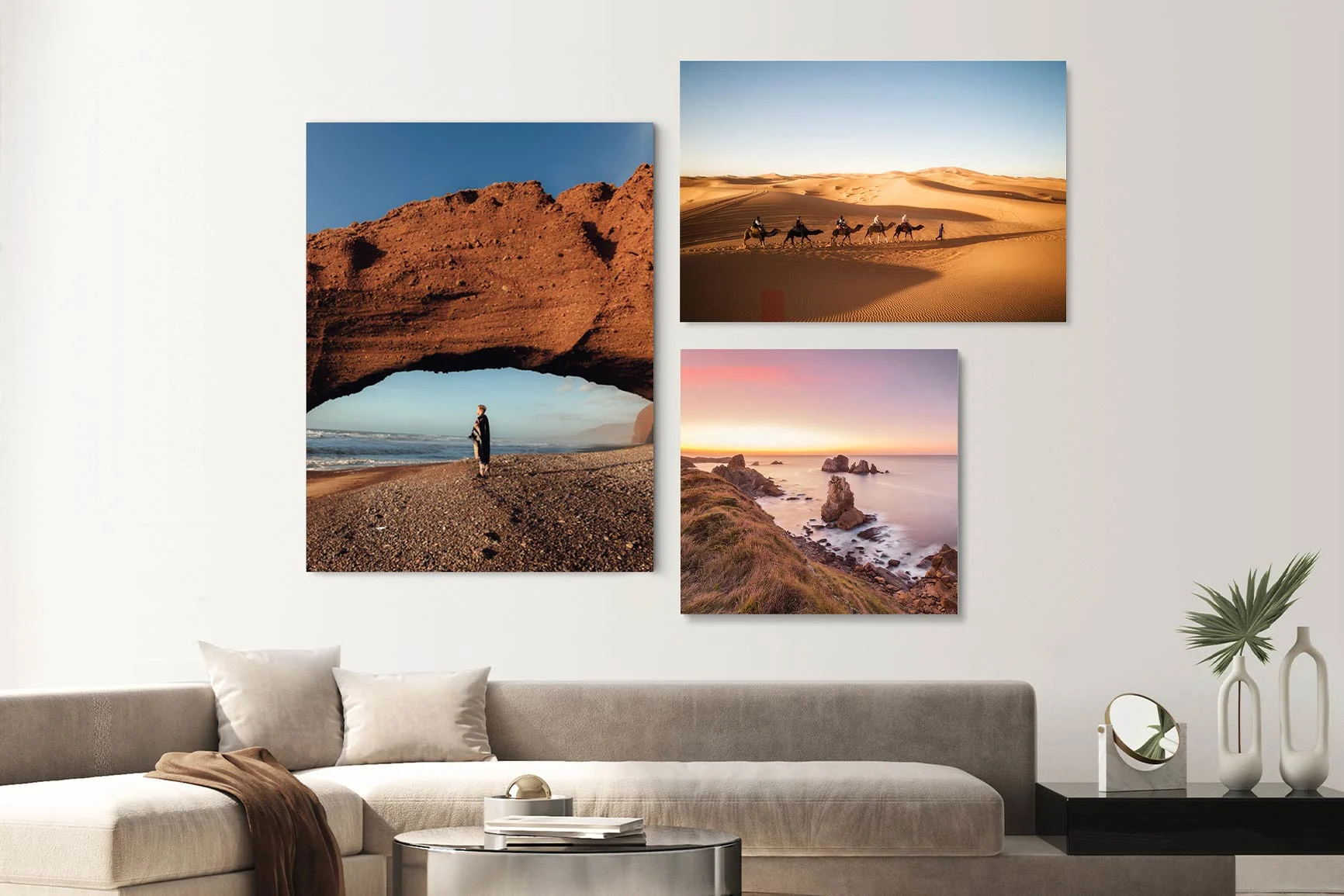
Alu-Dibond is particularly suitable for minimalist, modern motifs or black and white images. The matt surface means there are no distracting reflections and the print looks clear and puristic. Smartphone photos optimized with SuperResolution appear sharp - even in larger formats.
Fine art print on Hahnemühle Photo Rag or Baryta

The fine art print is the perfect choice for emotional motifs, portraits or atmospheric lighting conditions. The matt, textured surface of the paper supports fine tonal values and gives the images an artistic feel. Here too, SuperResolution provides the necessary resolution and image depth.
These product solutions show how technically optimized smartphone pictures can be turned into high-quality wall pictures with WhiteWall - individual, high-quality and in true gallery quality.
Conclusion: Small pictures, big impact - with AI upscaling
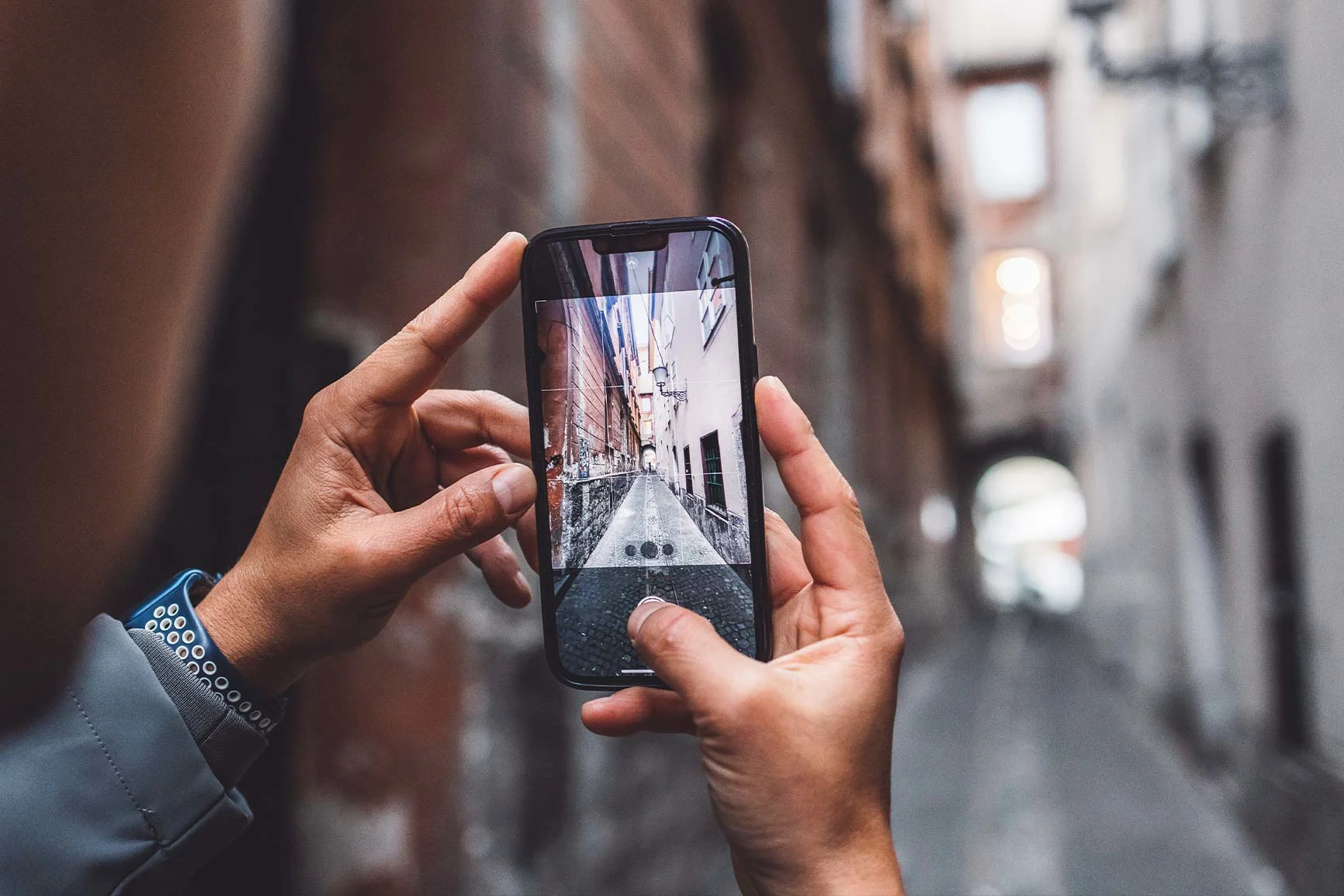
The smartphone camera is now an integral part of our everyday lives: it is fast, uncomplicated and always available. However, the desire for large-format print results is often thwarted by the technical limits of resolution. This is precisely where AI-supported upscaling with WhiteWall SuperResolution opens up new creative scope.
What used to be a compromise is now a fully-fledged option: with the help of intelligent algorithms, precise analysis and realistic reconstruction, a small file can be turned into a great mural without any visible loss of quality. In combination with UltraHD sharpening and high-quality materials such as acrylic glass, aluminum dibond or fine art papers, the result is a print quality that even impresses professionals.
Upscaling is therefore not just a technical measure, but an artistic tool with which you can get more out of your images. And it shows: Even the smallest image can be thought big when technology, design and passion work together.
Modern smartphone cameras are powerful—but their resolution is often insufficient for large print formats. Our new super resolution feature takes your smartphone photos to a whole new level of quality. With intelligent upscaling, we multiply the resolution of your image for razor-sharp prints, even in large formats.
Super Resolution can work wonders, especially with spontaneous shots, cropped images, or older smartphone photos. Using artificial intelligence, fine details such as hair structures, eyes, or textures are rendered much more clearly—without the typical loss of quality associated with conventional enlargements.
This turns your favorite smartphone photo into impressive wall art—without the need for a professional camera.
Discover WhiteWall SuperResolution now!
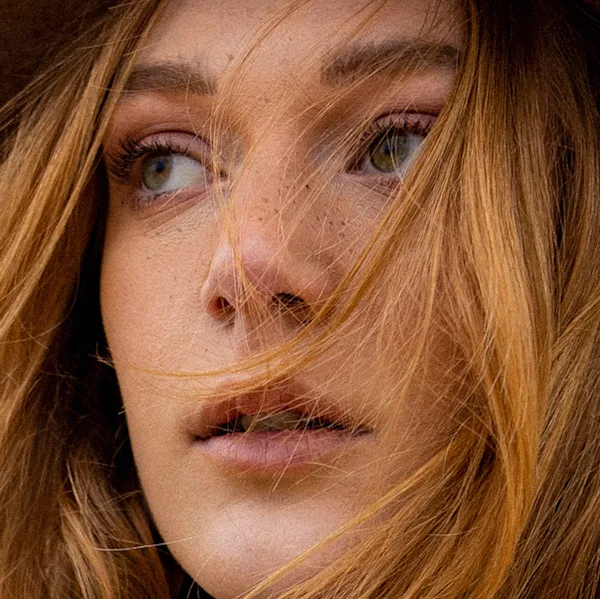
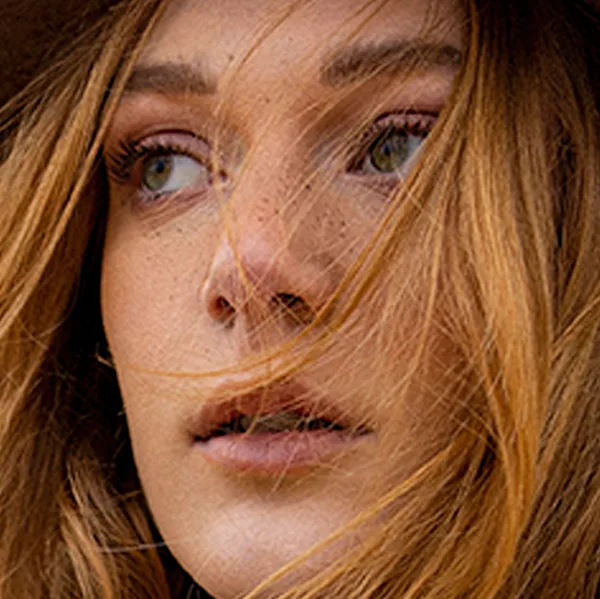
Learn more about the author
As a trained portrait and wedding photographer, Katharina Wergen brings her extensive knowledge to photography. She has been working as a sales consultant at WhiteWall since 2018 and supports exhibition projects for museums and galleries. She is also increasingly focusing on reportage photography. Take a look behind the scenes of the photographer, here in the interview.

Also interesting:
Submitted by WhiteWall expert Katharina Wergen
iPhone photography: creativity, technology, and quality from your pocket
Your iPhone is more than just a snapshot camera: learn how to use technology, creativity, and the right tools to create impressive images. Ideal for anyone who wants to get more out of their smartphone photos—including tips for high-quality prints in small formats.
Submitted by WhiteWall expert Katharina Wergen
Tips for taking successful smartphone photos
Whether it's composition, lighting, or editing, simple professional tips will visibly improve your smartphone photography. Learn what really matters and transform spontaneous shots into expressive images with your own personal touch.
Submitted by WhiteWall expert Katharina Wergen
Suitable photo products for smartphone pictures
Whether it's a coffee table book, a display stand or a photo calendar, discover high-quality products that stylishly showcase your best mobile phone photos – for your home, as a gift or as a personal memento.




